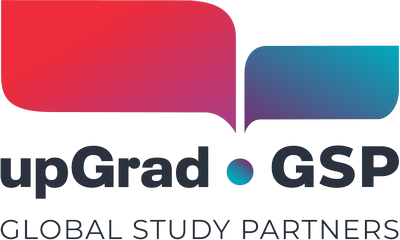As a top study-abroad destination, Australia welcomes thousands of international students every year. It can get competitive, so the best way to ride the wave is to be well-prepared for the application process. Most Australian universities host two intakes each year: the first-semester intake (October to December for February or March) and the second-semester intake (February to April for July or August). There are also some universities that hold additional intakes for admission in November or December (third-semester intake). In this article, we’ll walk you through how to prepare for intakes in Australia as we tackle key admission dates, eligibility requirements, necessary documents and the application process.
When are intakes in Australia?
Intakes are admission periods during which universities accept student applications. In Australia, intakes generally fall between October to December for the first-semester intake and between February or April for the second-semester intake. Unlike in other countries, Australian schools generally follow a rolling admissions process, allowing applications to be accepted even after official deadlines, provided there are still available slots in a given program. Some universities also offer flexible course start dates, which is advantageous for students who may experience delays via visa or travel restrictions.
Intake deadlines may vary per university—and maybe even by course or program—so students should check the specific due dates applicable to them.
Choosing an intake period
While one intake isn’t necessarily better than the other, each period has its own set of advantages. Most people apply during the first-semester intake, ideal for those who’d like to get an early start in their studies and make the most out of the following year in the country. This primary intake period welcomes a diverse pool of applicants, opening more peer-based learning opportunities for students.
The second-semester intake is well-suited for students who wish to have more time to prepare for their applications. This period also better aligns with class ending dates for international learners around the globe. That said, second-semester intake may have more limited openings and higher student competition, so it’s crucial to be extra prepared if opting for these dates.
Preparing for Australian intakes
To best prepare for intakes in Australia, students need to get to know the eligibility requirements and necessary documents for applying to universities in the country. These may vary per university and program, but they generally follow the same basic prerequisites.
Eligibility requirements for Australian intakes
Students must fulfil some eligibility criteria before applying to Australian university intakes. These typically include academic qualifications, language proficiency, graduate records examination (GRE) or graduate management admissions test (GMAT) scores, and a valid passport and student visa.
Academic qualifications
For students applying for a bachelor’s degree, they must have completed higher secondary-level education. For those aiming to take up post-graduate studies, they must have a bachelor’s degree from an accredited institution. Certain universities and courses may impose their minimum qualifications for admissions, and students should check these out before applying.
Language proficiency
As an English-speaking country, Australia expects international students pursuing education to understand the language—especially as it’s the main medium of learning in universities. IELTS and TOEFL are the two most accepted tests for admission, with students required to get at least a band of 6.0 and a score of 90, respectively, to be eligible for admission.
GRE or GMAT scores
While not applicable to all universities, many top institutions (including B-schools) require a minimum score of 280 in the GRE or 650 in the GMAT to enter their programs.
Passport and student visa
Students looking to study in Australia need to have a valid passport that allows them to apply for a student visa in the country. Otherwise, they won’t be allowed to travel to or stay in Australia.
Necessary documents for Australian intakes
Students shouldn’t underestimate the amount of paperwork it takes to complete Australian intake requirements. Here’s a quick list of documents students will need:
- certified transcript and academic records
- language proficiency scores
- higher secondary education or bachelor’s degree certificate
- GRE or GMAT scores
- statement of purpose
- letters of recommendation
- proof of financial resources
- updated curriculum vitae (CV) or resume
- copy of passport
- student visa
How to apply for Australian intakes
Applying for Australian intakes is a straightforward process. Here’s a step-by-step overview of how it typically goes.
1. Choose a university and program
The first thing a student must do is shortlist the universities and programs that they would like to apply to. They must take note of eligibility criteria and requirements for admission, along with deadlines for submission.
2. Start the school application process
Once the student has made their choice, they can start applying by collecting the needed documents and complying with necessary tests (like standardised exams or language proficiency tests).
Among these requirements is a written statement about one’s intention to apply. This is an opportunity for the student to let their personality shine through, highlighting their achievements, aspirations, and passion for their chosen field.
3. Wait for a decision
After submitting the requirements and paying relevant fees, students must wait for the university’s decision. This may take a couple of weeks; it’s best to stay updated on the university’s announcements for the specific timeline.
4. Enroll and apply for a student visa
If the student is accepted, they can then enrol in their course and proceed with obtaining their student visa.
Prepare for intakes in Australia with GSP
Help students be prepared for their educational journey in Australia by speaking to one of Global Study Partners (GSP) business development experts. We can guide you through Australian intakes so you can better prepare your learners for admissions.




